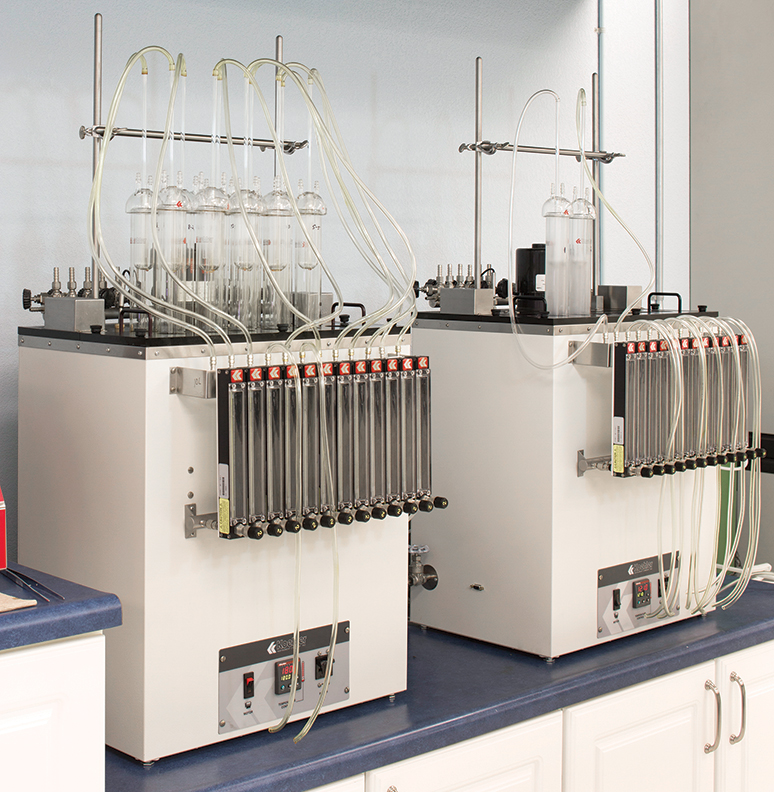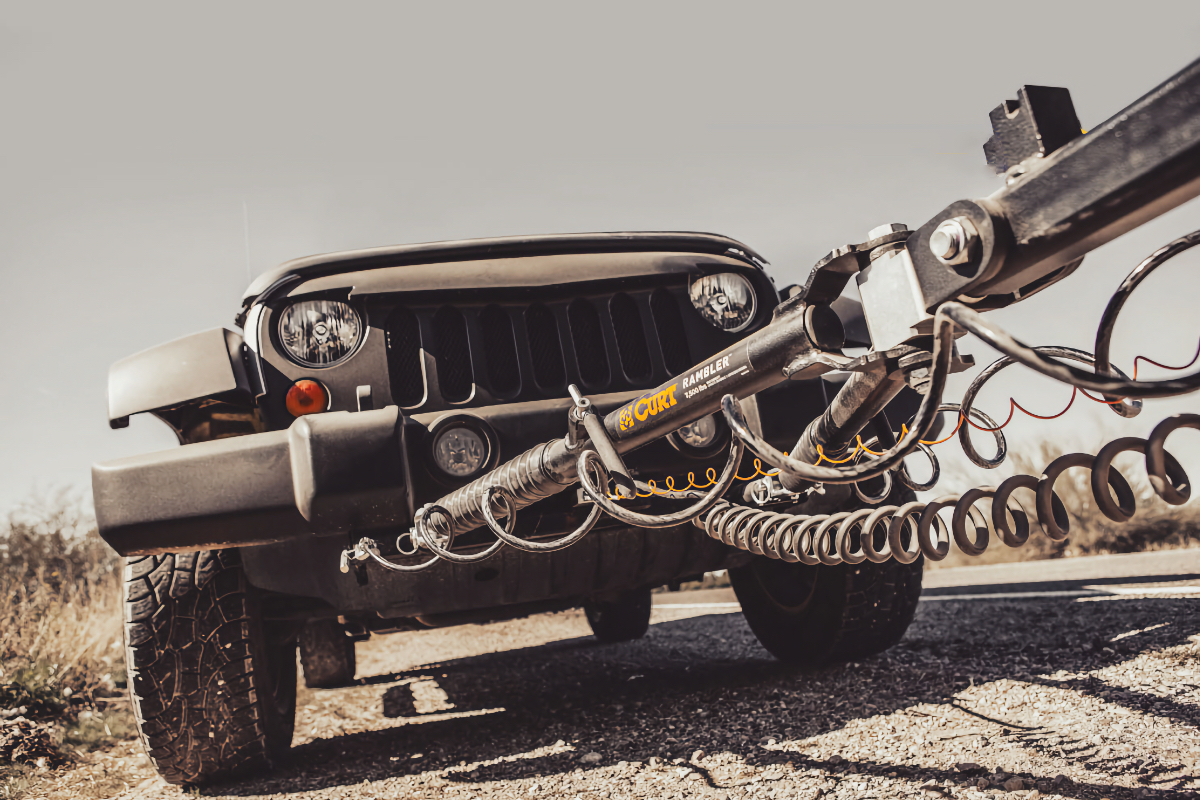Everything You Need to Know About Engine Oil
Keep Your Tow Vehicle in Top Shape
Image Caption:
A lot of people refer to engine oil as “the lifeblood of an engine,” and that’s not an exaggeration. Anyone who has let an engine run too low on precious oil has learned the hard way how much damage can be caused. But as important as oil is, most of us don’t know that much about it, other than it has to be checked periodically and changed on a regular basis. Oil is, in fact, an extremely complex subject if you really dig into it, but basic knowledge is all you need to make sure your tow vehicle lasts for the long haul. And, with a new diesel engine oil specification coming our way in 2016 (temporarily called PC-11), we thought it might be a good time to talk about engine oil and what it does for your vehicle’s engine.
Oil Facts
Engine oils are not just simply straight crude oil. They are sophisticated blends of heavier, thicker base oils (usually petroleum-based from crude oils but sometimes synthesized chemical compounds) that include hydrocarbons, polyalphaolefins and poly internal olefins. Additives are included in the oils to improve their performance characteristics. Not all base oils are the same, as some contain more or less sulfur, oxygen, nickel, zinc and other components compared to their competition.
Engine oils are grouped by viscosity, commonly referred to as “weight.” Technically, the term “viscosity” is a measure of the internal molecular friction resisting flow. In simple terms, the lower the viscosity number, the better that oil will flow when it’s cold. (See “What’s in a Donut?” on page 40.)
Your vehicle’s owner’s manual will tell you exactly what viscosity should be run in that particular engine. Typically, it is recommended that you stick with the oil grade recommended by the manufacturer, but this is not always the case. Bear in mind that the manufacturer’s recommendation is based on a new or as-new engine operated in a typical environment; a high-mileage engine or one operated in extreme heat or cold may be better suited to a different oil grade. Moreover, oils have a temperature operating range, so if you’re in a jam and need to add a quart or two of oil to the engine, but the grade isn’t available, it’s fine to select a different grade. For example, the American Petroleum Institute (API) cites 5W-20, 5W-30, 10W-30, 10W-40 and 20W-50 as being suitable for passenger cars operated at temperatures no lower than 32 degrees Fahrenheit.
Synthetic Intelligence
Synthetic engine oils were first developed in the late ’30s and early ’40s by German scientists because they lacked enough crude oil for their military needs. An additional benefit of the synthetic oil was its ability to continue to operate in subzero temperatures. Later, in the ’50s, synthetic engine oils were coveted in jet-engine use for their ability to withstand high operating temperatures without breaking down. In the ’60s, Albert J. Amatuzio experimented with synthetic oils in auto engines, and in 1972, his company, Amsoil, was the first synthetic engine oil to meet API requirements.

Amsoil’s oxidation testing lab is just one example of the types of testing that go into producing a high-quality synthetic engine oil.
Interestingly, synthetic oil isn’t really synthetic — it still uses a petroleum “base stock,” which is transformed using a process known as organic synthesis. When the petroleum oil base stock undergoes organic synthesis, a uniform molecular structure is achieved, and a “perfect” oil is created. This offers a number of benefits, including greater film strength (for better wear protection), a lower pour point (for easier pumping in cold weather) and greater lubricity, which can result in reduced operating temperature, improved fuel economy and more power.
Synthetic oil’s ability to work well in both cold and hot environments is one of its many advantages. Synthetic oils also have a longer service life, so some synthetic oil suppliers recommend oil changes only every 15,000 miles — even longer, if the oil filter is changed and more oil is added.
Synthetic Oil Myths
The rise of synthetic oils led to some confusion and myths that should be dispelled with right here. First, synthetic oils will not cause oil leaks. Initial reports of oil leaks came from owners of old, high-mileage engines that were essentially sealed by their own crud and varnish. The higher detergent quality of synthetic oil washed this away, “creating” oil leaks. Engine seals are perfectly fine with petroleum-based or synthetic engine oils. Engines can be broken in with synthetic oils; mineral-based and synthetic oils can be mixed, if necessary (for instance, to top off the oil when no synthetic is available). Finally, no vehicle manufacturer (save for Mazda’s rotary engines of old) has ever said that using synthetic oil would void your warranty.
The only real disadvantage of synthetic oils is that they cost more, but this is mitigated somewhat by their higher change interval. Amsoil proved that synthetic was more capable than petroleum-based oils. Now, every major engine oil manufacturer also makes synthetic engine oil, and many vehicle manufacturers specify it for their engines right from the factory.
Changing Diesel Standards: PC-11
In 2010, the National Highway Traffic Safety Administration (NHTSA) announced regulations designed to reduce the level of greenhouse-gas emissions and mandate fuel-economy improvements for medium- and heavy-duty engines and vehicles.
Back in the ’50s and ’60s, there were only single-grade oils, i.e. 50-weight, 30-weight and so on. But as emissions standards became the norm, oil had to change. Oil consumption, in particular, had to be reduced. In 1988, the first new category of multigrade oil (CE) was introduced, and oil consumption was in fact reduced by a reported 30 percent. Soon after, engine manufacturers found new ways to improve combustion efficiency, and one of them was with heat. Consequently, a new category of oil had to be developed to handle the higher temperatures, oxidation and soot. Continued reduction in emissions using a diesel particulate filter (DPF), selective catalytic reduction and exhaust gas recirculation (EGR) forced other improvements in oil quality, and new categories were created along the way.
Currently, the vast majority of the U.S. market uses SAE 15W-40 oils in diesel engines, but there is an increased use of SAE 10W-30 oils. Lower viscosities are known to provide better fuel economy, but they have to work under increasingly higher combustion temperatures. In January 2016, PC-11 debuted. It was the eighth new category introduced to the diesel oil market.
In addition to reduced greenhouse gases and better fuel economy, the new oils are expected to have improvements in oxidation stability and shear stability, resistance to aeration and biodiesel compatibility. The possibility of two new categories is being discussed, one for 15W-40 and one for 10W-30. If that happens, it would be a first. The 40-weight oils would be “backward compatible” for all diesel engines, while the new 30-weights would be used only in engines designed for it. Oil industry experts expect that the heavy-duty off-road equipment companies that do not have a fuel-economy standard will go with the SAE 15W-40 oil, while on-road truck builders will want the fuel savings of the new SAE 10W-30 oils.
Oil Best Practices
If you omit the technical details of refining and testing, understanding today’s engine oils isn’t difficult. Use the recommended oil for your application, keep the fill level up and change it when necessary, and motor oil will serve you (and your vehicle’s engine) well for many years to come.
How Often to Change Your Oil
If you get your vehicle’s oil changed at a quick-lube shop, chances are they put a little sticker on the windshield telling you to change the oil again in 3,000 miles. In the earlier days of carburetors and distributors, this was probably a good idea, as imprecise fuel mixtures and incomplete combustion caused engine oil to break down more quickly. That’s all changed in modern engines, yet quick-lube shops still recommend a 3,000-mile interval. Why? The simple answer is to make money. It’s no coincidence that a major oil company owns one of the leading quick-change lube chains.
The reality is, none of today’s auto manufacturers recommends changing the oil every 3,000 miles, especially with the quality of oil we have today. The average interval for 2010 cars, for example, is around 7,800 miles. Many auto manufacturers state in the owner’s manual that the oil change frequency should be 7,500 or even 10,000 miles.
Think about it. The oil companies have been making great strides in the development of oil in the past few decades, and by changing the oil too soon, you aren’t even letting it do the job it was engineered to do. Not to mention that you are putting oil back into the recycling arena far more frequently than required. The California EPA even ran a campaign to raise awareness about too-frequent oil changing. If in doubt, having the oil analyzed every 3,000 miles makes a lot more sense than just blindly changing it.
What oil does for the engine
Separate and Lubricate: One of the most important jobs of engine oil is to prevent the moving components in an engine from coming in contact with each other. The thickness, or viscosity, of an oil must be thick enough to keep the metal parts from touching each other yet thin enough to flow throughout the engine and not get bogged down in cold-weather conditions. A thin film is all that’s needed to provide a cushion and allow the metal parts to slide or rotate without ever actually touching. This reduces wear and ensures the parts live for a long time.
Keep It Cool: Another important job for engine oil is keeping the engine components cool. When a bath of oil runs through the hot engine, it carries some of the heat away from the metal parts as it travels. Modern engines are using higher combustion temperatures to get better efficiency, so good cooling qualities become even more important. The top piston ring in a gasoline engine, for example, can see temperatures around 320 degrees Fahrenheit, while in a diesel engine, temperatures are about 600 degrees Fahrenheit (depending on load, throttle position, etc.).
Clean It Up: Removing and suspending dirt and other contaminants in the oil until it reaches the oil filter (or gets drained out with an oil change) is another increasingly important role of modern engine oils. Most good oils have a detergent additive to keep internal engine components free of sludge that can block oil passages and collect dirt. In diesel applications, the oil can even remove and trap soot that is formed during combustion.
Prevent Oxidation: Oxidation, which leads to corrosion, is a problem that modern oils address. By clinging to metal components, the oil doesn’t allow oxygen to get to the metal and start the process of oxidation.
Increase Fuel Economy: Additives that the manufacturers include in their oils can make the oil slipperier (a characteristic known as lubricity) and make the engine turn with less effort. Less drag takes less power to move the same amount of mass, and that leads to better fuel economy. It’s not a lot, but auto manufacturers need every advantage they can get when they are trying to meet mileage standards. This is why you are seeing lower viscosity levels being recommended by manufacturers, compared to the past.
What’s in a Donut?
Just about everything you need to know about an oil is on the American Petroleum Institute (API) “Donut” on the back of the bottle — if you know how to read it. At the top, you’ll see the words “API Service,” followed by two or more letters. Letters beginning with S (such as SN, SL, SJ) are service or spark-ignition categories designed for gasoline-burning engines. Letters beginning with C (such as CJ-4, CI-4, CH-4 and CG-4) are commercial or compression-ignition categories designed for diesel applications. In the center of the Donut are the numbers that you’re most likely concerned with, the viscosity grade of the oil. Put simply, viscosity is a measure of an oil’s thickness, typically expressed in numbered grades ranging from 0 (thinnest) to 50 (thickest).

Originally established by the Society of Automotive Engineers (SAE), oil viscosity was initially a single grade, or “straight weight,” but that changed when the SAE added winter grade designations, indicated by a “W” after the viscosity grade (i.e. 10W).
The evolution of motor oil took another big step a short time later, when advances in petrochemical engineering led to the development of viscosity enhancers that made it possible for a single oil to serve double duty in low and high temperatures. These became known as “multigrade” oils, hence the oils we’re all familiar with: 10W-30, 10W-40, etc.





